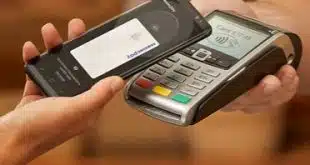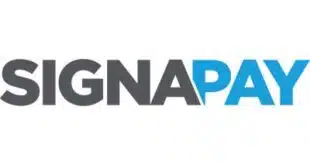Foundational changes in payments — the emergence of fintechs, a mobile-first approach by consumers, and the digitization of payment methods — are altering vital relationships in the industry.
Two thousand twenty may be the year that many of the underlying changes various payments players have made in the last few years manifest in a resounding way.
That is one possibility as the industry adapts to the impact of financial-technology providers—formerly called nonbank providers—and their services, which consumers are clamoring for amid incumbents’ ambitions to retain their customers and add more.
How all this affects retail payments, defined as those completed through a financial institution, is critical.
Here’s what’s happening in payments that suggests the industry’s future is being thoroughly rewritten.
Last month, news emerged that Alphabet Inc.’s Google subsidiary plans to offer checking accounts via partnerships with Citigroup Inc. and Stanford Federal Credit Union. Few details are available, but the move is more evidence of a technology firm drilling deeper into payments. Google has long offered a payments service, starting in 2006 with Google Checkout, which became Google Wallet and now resides under the Google Pay umbrella. Google Pay is one of the big mobile-payment apps—Apple Pay and Samsung Pay are the others—from giant tech firms.
Another big move in November, at least on the surface, was the launch of Facebook Pay. The social-media giant launched the service as a consolidated way for users of its various sites to pay each other, make donations, and shop. Consumers enroll a credit or debit card or a PayPal account to pay.
Facebook, too, is organizing the Libra cryptocurrency project, which could be used for payments if regulators let it get off the ground (“Under the Sign of Libra,” October). It is working on a companion wallet called Calibra.
Then there are the native payment companies adding untraditional services. Processor Stripe Inc. added Stripe Issuing in 2018 as a platform for merchants to issue their own credit and debit cards. And this year, Adyen, another international processor, launched Adyen Issuing. Cards issued under this program can be used online and in-store and added to mobile wallets, Adyen says.
There’s a plethora of other examples of this fintech impact, including the whole faster-payments initiative. It’s in commercial use now through The Clearing House Payments Co. LLC’s Real Time Payments service, with others, including FedNow from the Federal Reserve, expected. Prepaid provider Green Dot Corp. offers not just prepaid cards, but banking services such as its Unlimited bank account.
‘Big Bets’
“This is the year we think a lot of the strategies are going to be played out in the payments space,” says Zach Aron, principal at Deloitte Consulting LLP for U.S. banking and capital markets payments. “We will see big bets this year.”
His explanation for that outlook is partly that so many organizations have made foundational moves in the past few years. These efforts reflect how they collaborate with fintechs and how they think about the role they want to play.
At the forefront of this movement is the ongoing digitization of payments. With the advent of network tokenization and the proliferation of use cases for digital versions of credit and debit cards, the dominance of the traditional card form factor may appear to be at risk. But Deloitte says that’s not the case.
In the 2019 edition of the Deloitte Center for Financial Services’ payment survey, a plurality of respondents—47%—said they are more likely to use credit cards than other payment instruments in the next two years. Next were debit cards at 40%. Cash, at 7%, was a distant third, followed by bank transfers, 5%, and checks, 1%. The survey canvassed more than 2,500 consumers in August.
As consumers think of more and more digital ways to pay, their understanding of the credit card may change. That does not mean consumers won’t think of credit cards, a simpler transactional mindset may gain favor. “As people move to more digital aspects, they don’t think of it as a credit card transaction,” Aron says.
And as they use more digital-payment methods, consumers may alter their definition of a transaction from one that entails dipping a card into a terminal. “We will see a growing digital presence,” Aron says. “I don’t think we will see declining plastic use.” Instead, the digital growth may come at the expense of cash, a long-sought-after goal of payments companies.
According to Accenture, retail-payments revenue will likely grow at a compound annual rate of 4% over the next six years, going from $322 billion in 2019 to $405 billion in 2025. To ensure getting a share of that growth, banks and other payment-industry incumbents need to shift strategies, Accenture says.
Accenture pegged the potential loss to banks in terms of retail payments revenue, if they don’t act in response to fintechs and other emerging payments providers, could be as much as $88 billion in the United States and Canada.
The worldwide effect, of course, could be much greater. “The impact of [instant, invisible, and free] payments will be significant. Based on our analysis, it is likely to decrease the payments revenue pool by 15 percent by 2025 and may cost complacent banks up to $280 billion in revenue opportunity loss, globally,” the report says.
Accenture is already finding significant erosion. It calculates that debit card revenue per transaction was 29 cents in 2018, a 14.6% decrease from 34 cents in 2015. For credit cards, revenue per transaction was $1.07 in 2018, down 11.6% from $1.21.
Fintech players may be aided in their efforts because of a couple significant developments this year, says Kevin Grieve, Accenture managing director-payments lead.
“You have to look at probably two things that happened this year that are pretty fundamental changes in the marketplace,” Grieve says. “This first is the consolidation in the marketplace. We had the recession in 2008 and deals just stopped. M&A activity is part and parcel of payments,” he says. “The reason is because scale wins.” Megadeals completed in 2019 include the $43 billion Fidelity National Information Services Inc. (FIS) and Worldpay Inc. deal, the $22 billion Fiserv Inc. and First Data Corp. merger, and the $21.5 billion Global Payments Inc. and Total System Services Inc. (TSYS) combination.
A better economy fostered these and scores of other deals. “There was pent-up demand because the industry has always been a consolidation industry,” Grieve says. “We’re back to an original mega-trends of the industry.”
“The second piece is how much the fintechs are playing,” Grieve says. Payments is a leading focus of their investments. “Fintech is here and having an impact on the industry.” A major portion of the investment in fintechs is payments, he says. With the continued digitization of the industry, many fintechs are capturing revenue, he says.
Aiding this trend is fintechs’ superior technology. Banks and other financial institutions may depend on legacy technology that leaves them lagging behind the nimbleness of the newer fintechs.
Consumer Expectations
The big factor behind all of this change is the consumer. “Consumers are the primary influencing factor in how retail payments are changing. How they want to engage, and their ability to shift to new financial institutions, now places banks and credit unions at risk of losing deposits and other payment methods if they do not innovate,” says Krista Tedder, director of payments at Pleasanton, Calif.-based Javelin Strategy & Research. “Consumers are omnichannel—mobile, browser, in person.”
Consumer expectations have changed, as they can from one generation to another, she says. In today’s arena, those expectations will be facilitated via technology.
“The technology infrastructure needs to dramatically improve to enable U.S. consumers to be digital only,” she says. “If you look at online help capabilities, you will see that we have a long way to go.”
“The big thing is consumer behavior typically gets set outside the industry and [consumers] bring their expectations with them,” Grieve says. “All those experiences diffuse, and they diffuse very quickly.”
Because of these expectations, new models around pricing and the economics of payments will evolve, says Aron. Consumers see value in credit cards and the rewards they offer, but the industry is starting to see the undercurrents of change in how cards are issued, he says.
Apple Inc., for example, launched its Apple Card this year, in conjunction with Goldman Sachs Group Inc., as a digital-first product, with a companion app holding details that are not even printed on the physical card.
Reinventing Revenue
Accenture, in its report, suggests several strategies to reinvent retail payment revenue, including moving away from legacy technology, collaborating more, tapping into data in new ways, and preserving customer trust.
Reinventing revenue means offering more value-added services that consumers are willing to pay for. “New market realities demand replacement revenue in the form of value-added services and experiences to drive economic performance,” the report notes
Similarly, Deloitte, in its report, views competition between open and closed payments platforms as a top trend for 2020. Others are how the economics of payments are evolving; the development of new standards that govern the flow of money; the role of noncommercial organizations in payments; and talent acquisition, especially as technology roles gain more importance.
“How, when, and what the strategies look like will come as big bets next year,” Aron says. “The tea leaves for that will be in a variety of areas.” It will manifest in the design and development of payments platforms. Will the investment be directed more to integration with others or will the effort be on vertical integration, Aron says.
The public sector also will make moves, like the Federal Reserve’s FedNow real-time payments project. “We will start to see new ideas around pricing and economics as well,” Aron says.
“As value decreases for traditional competitive differentiators, such as transaction processing speed, convenience, and access, these offerings may become increasingly commoditized; this could reduce once-dependable payment processing fees and spur companies to establish alternative revenue streams,” says the Deloitte report.
New mega-processors, like Fiserv, FIS, and Global Payments, combined with available banking services, may develop new products that tap into both issuing and acquiring.
The card brands, too, will want to play a role. “There’s more focus today on the issuing side of retail payments, like consumer-facing apps that include all of the alternative lenders, the point-of-sale lender, and the investment platforms that have popped up,” says Adam Granoff, Mastercard Inc.’s senior vice president of digital partnerships.
The brand has worked with many fintechs on their technology and has made that available to banks, too, he says.
“They are providing digital-first service,” Granoff says of fintechs in general. “In some cases, they are putting a more intuitive lens on financial services that have been around for a long time.” Others may be providing new services, such as lending services for online purchases.
One Large Collaboration
From his perspective, Granoff views the entire payments industry as one large collaboration because of a key characteristic unique to financial institutions. To provide financial services, an organization needs to be a fully licensed and chartered bank, he says.
Mastercard itself requires issuers to be chartered banks. As a result, “the entire ecosystem is a giant collaboration,” Granoff says. “All of the services are being provided in partnership with a bank.”
He cites tokenization as a technology that lives in the bank world and among fintechs. “We’re helping merchants tokenize their existing cards on file to provide basically a smarter payment credential,” Granoff says.
The technology is vital to mobile payments. Tokenization is one of the much-touted features of Apple Pay, Google Pay, and Samsung Pay, all of which rely on replacing the actual card data with a token.
Tokenization is what makes it possible for in-app transactions to happen behind the scenes, such as in the Uber and Lyft apps. “Tokenization is a really important piece of innovation that is helping deliver a better experience,” Granoff says. “We will continue to see use cases proliferate where tokens are helping do that so less transactions are declined.”
Even The Clearing House is incorporating Mastercard’s tokenization technology into its Real Time Payments service, melding something that originated in the card world with a non-card payment service.
Mastercard has not been timid when it comes to finding ways to use its technology to foster electronic payments. In 2017 it purchased VocaLink Holdings Ltd., a United Kingdom-based faster payments company, whose software helps power the TCH service.
Indeed, collaboration is vital, says Javelin’s Tedder. Just as important is creating a framework for how the collaboration will function. “A challenge many fintechs have is they find a champion of their service who is not a decision maker and cannot provide funding,” she says. “Financial institutions should create a cross-functional team which can assess, test, and implement solutions in an agile manner.”
‘Better, Cheaper, Faster’
Ironically, the biggest challenge the payments industry faces amid the swirl of fintechs, financial institutions and consumers, is that it is a profitable one, Aron says. “Doing nothing makes you a lot of money,” he says.
But this is not how this will play out. There will be a lot of bets on new products and services and on new combinations. Digital transactions will grow, but plastic use won’t decline, Aron says. The trend will reflect more digitization of cash.
Granoff’s outlook is that more combinations of services across what had been traditional boundaries is the new norm. “We’re going to see more of the same for the next couple of years,” he says.
Fintechs and banks will continue to partner, and banks will continue to offer their own digital products and services, he says. “It’s a really good place for the consumer and this business because there’s a lot of innovation going on. That’s delivering better, cheaper, and faster financial products.”




